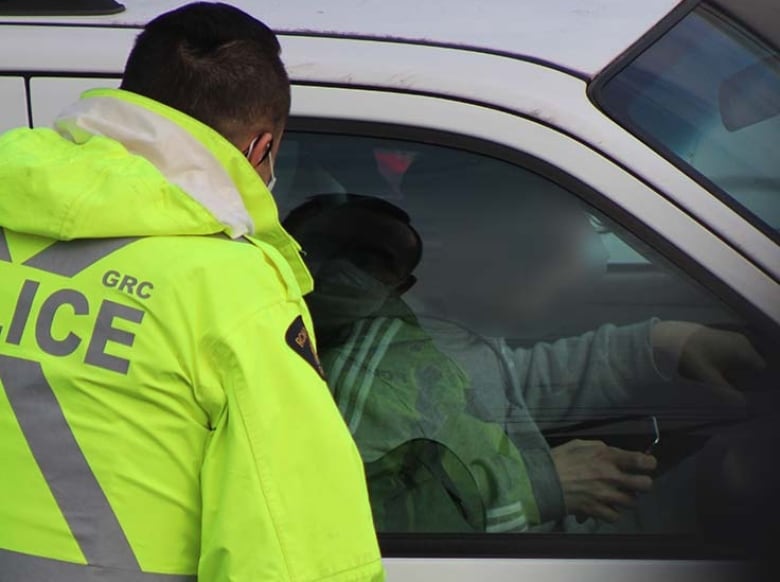
While distracted driving is a factor in 40 per cent of police-reported crashes and contributes to almost 80 deaths in the province annually, according to the Insurance Corporation of British Columbia (ICBC), some people are still unclear about the rules around distracted driving — and that includes ICBC itself.
Earlier this week, the provincial auto insurer released a video meant to demonstrate the rules around distracted driving — showing what is and what isn’t OK when it comes to the placement of phones and other electronics in your vehicle.
But it didn’t take long for the video to generate more questions than answers, with viewers pointing out that some of the information being shared seemed to be in direct contradiction of the province’s rules.
It turns out they were right and ICBC removed the video, apologizing for the confusion.
We made an error in an earlier version of this video so we’ve corrected it. Thanks for pointing it out! Please accept our apologies for any confusion it may have caused. <a href=”https://t.co/LQV62Bp3xb”>pic.twitter.com/LQV62Bp3xb</a>
—@icbc
But the whole episode shows how widespread the confusion is about B.C.’s laws on distracted driving, which have led to more than 140,000 tickets being issued since 2018, according to ICBC.
Lawyer Jenn Teryn, who specializes in driving prohibitions and motor vehicle issues, said for laws to be enforceable, they have to be written clearly — and in many cases, distracted driving rules aren’t.
“It is really challenging for the average person to understand what is and isn’t permissible while operating a vehicle,” she said.
“It’s just really complicated and confusing.”
ICBC says the bottom line is to keep your focus on the road.
“[Distracted driving] is the second leading contributing cause in fatal crashes,” road safety program manager John Nepomuceno told On The Coast host Gloria Macarenko.
“While you’re driving, drive. Leave your phone alone, please.”
CBC spoke to experts to try to break down the more detailed rules around distracted driving.
On The Coast9:53Phone riding shotgun? ICBC says that’s a problem
Road Safety Program manager John Nepumuceno speaks with Gloria Macarenko about why your phone shouldn’t be on your passenger side seat.
What is distracted driving?
Any time a driver looks away from the road while driving is considered distracted driving, according to ICBC.
This includes looking down at a phone or GPS, turning around to talk to someone in the back seat, changing the radio station, eating, drinking, or putting on makeup.
This rule applies not only while on the move, but also while stopped at a red light.
“Drivers are 3.6 times more likely to crash if you’re interacting with your smartphone or any electronic device,” said Nepomuceno.
Manually texting or dialling is strictly prohibited.
Yesterday we launched the province wide distracted driving campaign in Northvan. Officers from <a href=”https://twitter.com/nvanrcmp?ref_src=twsrc%5Etfw”>@nvanrcmp</a> <a href=”https://twitter.com/BCHwyPatrol?ref_src=twsrc%5Etfw”>@BCHwyPatrol</a> and <a href=”https://twitter.com/WestVanPolice?ref_src=twsrc%5Etfw”>@WestVanPolice</a> joined forces to conduct enforcement across different intersections in Northvan. In 8 hrs, 111 tickets were issued, 85 were for cell phones. <a href=”https://t.co/bRP1Ve8HGm”>pic.twitter.com/bRP1Ve8HGm</a>
—@nvanrcmp
Where should I place my device while driving?
It’s preferable to keep devices in a glovebox or centre console of some kind — out of reach and out of mind, Nepomuceno says.
He also suggests putting it in do-not-disturb mode or driving mode to delay notifications until the vehicle is parked.
A device can also be securely mounted on the dash, Nepomuceno says, but touching its screen more than once, even while stopped at a red light, is considered distracted driving.
Teryn says a phone can be placed anywhere in the vehicle as long as it’s not in use.
Am I allowed to take calls?
Unless you have an L or N licence, using a device hands-free — including taking calls — with the help of tools like Bluetooth headphones is allowed, as long as the driver has put the headset on before they started driving, says Nepomuceno.
To take calls using the one permissible touch, the device must be mounted securely on the dashboard or placed within easy reach of the driver, and in a position that does not obstruct the driver’s view, according to Teryn.
BC Today49:56Clarifying distracted-driving laws. Food insecurity.
Jenn Teryn, a lawyer at McCullough Watt Sutton Lynskey & Hodson in Victoria, and Rob Wilkinson, the Director of Community Partnerships for Traffic Injury Research Foundation in Ottawa, discuss distracted driving. Lenore Newman, director of the Food and Agriculture Institute at the University of the Fraser Valley, discusses food insecurity.
“Taking a call is not necessarily considered distracted driving, assuming your focus remains on driving and you adhere to the rules,” Teryn said.
For example, if the phone is placed on the passenger seat, taking a call using its speakers could be considered distracted driving.
But if the phone is connected to the vehicle’s speakers through the in-car system, drivers may take the call as long as it does not require more than one touch.
However, these actions are subject to police interpretation, according to Nepomuceno.
If you need to make or take an important call, send a text, or change directions on your GPS using your hands, you’ll have to pull over and put the car in park, he says.
What are the consequences of distracted driving?
Distracted driving contributes to 77 fatalities in B.C. each year, ICBC says.
Drivers caught are fined $368 and four penalty points are added to their driving record, meaning they will likely pay more in insurance premiums.
If you have four or more points at the end of a 12-month period, you pay a driver penalty point premium that ranges from $214 to $29,376.

If you get more than one distracted-driving ticket in a three-year period, you might also be subject to a driver risk premium, which, depending on the offence, could cost hundreds more dollars.
Drivers with an L or an N license could also be prohibited from driving for up to eight months.












